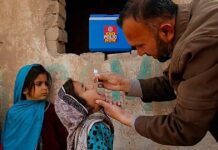 NEW DELHI: WHO estimates that more than 5 million people in the WHO South-East Asia Region will die from the consequences of viral hepatitis in the next 10 years. There are an estimated 100 million people living with chronic hepatitis B infection and 30 million people with chronic hepatitis C infection in the Region.
NEW DELHI: WHO estimates that more than 5 million people in the WHO South-East Asia Region will die from the consequences of viral hepatitis in the next 10 years. There are an estimated 100 million people living with chronic hepatitis B infection and 30 million people with chronic hepatitis C infection in the Region.
WHO World Hepatitis Day was observed on 28 July to increase the awareness and understanding of viral hepatitis and the diseases that it causes.
Hepatitis means “inflammation of the liver”. Seven types of viruses can cause viral hepatitis, called hepatitis A to G. Of these, the most common causes of infection are with one of four viruses: hepatitis A, B, C and E. All of these viruses can cause an acute illness with symptoms lasting several weeks, including yellowing of the skin and eyes (jaundice); dark urine; extreme fatigue; nausea; vomiting and abdominal pain. Because of the asymptomatic nature of chronic hepatitis B and hepatitis C, most people infected with these are not aware of their status until they have symptoms of cirrhosis or liver cancer many years later. About 65% of those with hepatitis B and 75% of those with hepatitis C do not know they are infected. An effective vaccine has been available to prevent hepatitis B since 1982.
“Viral hepatitis must be given greater priority in terms of both resources and effort. Good surveillance is essential. Infant immunization coverage for hepatitis B must reach levels greater than 95%” said Dr Samlee Plianbangchang, WHO Regional Director for South-East Asia. “It should be mandatory for all blood and blood products to be screened for hepatitis B and C” he added.
Hepatitis A and hepatitis E are also serious health problems. Approximately 12 million cases of hepatitis E infection occur annually in the region, which accounts for more than half the global burden. These levels of infection, especially when they often occur in the context of outbreaks are a serious cause for concern. Both diseases thrive in unsanitary conditions where they are transmitted through the consumption of contaminated food or water.
In most countries in South-East Asia, increased development has led to rapid urbanization and crowded, overpopulated cities where conditions are perfect for the spread of these viruses. “The quality of hepatitis testing in public and private laboratories needs to be monitored. We need widespread public awareness campaigns, targeted at health and social workers as well as the general public, to increase awareness about the risk of viral hepatitis” said Dr Plianbangchang.
To address this important public health challenge, WHO is developing a strategy for the prevention and control of viral hepatitis in South-East Asia. To support this initiative, the UN health agency brought health experts from 11 countries together to help finalize the six ‘pillars’ of this strategy, which address the areas of policy, planning and resource mobilization; surveillance, prevention and control, education, medical care and treatment and research.
India Post News Service






